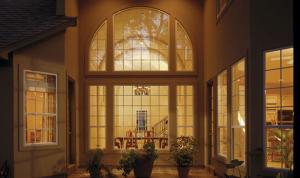Delving into Window Styles: A Comprehensive Look at Architectural, Awning, and Bay Windows
A comparison between Architectural, Awning and Bay windows
The world of architectural design is expansive, providing homeowners with numerous options to tailor their spaces. Among these choices, windows play a pivotal role, impacting both aesthetics and functionality. Three window styles that have gained prominence are architectural, awning, and bay windows. To provide insight into these designs, industry expert Robert Jacques shares the inherent pros and cons of each.
Architectural Windows
Often known as "specialty" windows, architectural windows come in varied shapes and sizes, ranging from circles to arches to unique geometric designs.
Pros:
Aesthetic Appeal: "Architectural windows can serve as the focal point of a room, or even an entire façade, adding a touch of uniqueness and personalization," notes Jacques.
Versatility: These windows can be tailored to fit into almost any space or design scheme.
Cons:
Non-Standard Sizes: Due to their custom nature, replacements can be more challenging and might require specially ordered parts or materials.
Fixed Design: Most architectural windows do not open, so while they can provide light, they don't aid in ventilation.
Awning Windows
Hinged at the top and opening outward, awning windows are designed for utility and style.
Pros:
Weather Protection: "One of the primary advantages of awning windows is that they can be left open during light rains, providing ventilation without letting in the water," remarks Jacques.
Enhanced Privacy: Due to their design, they can be placed higher on walls, allowing light in without compromising on privacy.
Cons:
Limited Opening: The design, while protective, means the window doesn’t open fully, restricting the amount of fresh air entering the space.
Outside Obstructions: Their outward-opening design can be an issue in areas with external obstructions or pedestrian traffic.
Bay Windows
Comprising three or more windows that project outward from an outer wall, bay windows create a captivating alcove within a room.
Pros:
Added Space: Bay windows provide an extra interior space that can be utilized for seating, storage, or even a cozy reading nook.
Panoramic Views: "Bay windows offer broader external views, making them perfect for properties with picturesque surroundings," states Jacques.
Increased Natural Light: The multiple panes and angles mean more light can flood into the room.
Cons:
Complex Installation: Installing bay windows can be more intricate than standard windows, often requiring structural adjustments.
Maintenance: Given their design, cleaning, especially on upper floors, can be more challenging.
As the architectural domain continues to evolve, the importance of understanding the nuances of various design elements becomes paramount. Windows, subtle yet influential in shaping the character of a space, deserve careful consideration.
Jacques concludes, "Choosing the right window style is a blend of aesthetics and functionality. While all these styles have their distinct advantages, it's crucial to weigh them against their limitations to determine the best fit for a particular space."
April Gilliard
Rhino Web Studios
+1 504-875-5036
email us here
Legal Disclaimer:
EIN Presswire provides this news content "as is" without warranty of any kind. We do not accept any responsibility or liability for the accuracy, content, images, videos, licenses, completeness, legality, or reliability of the information contained in this article. If you have any complaints or copyright issues related to this article, kindly contact the author above.


